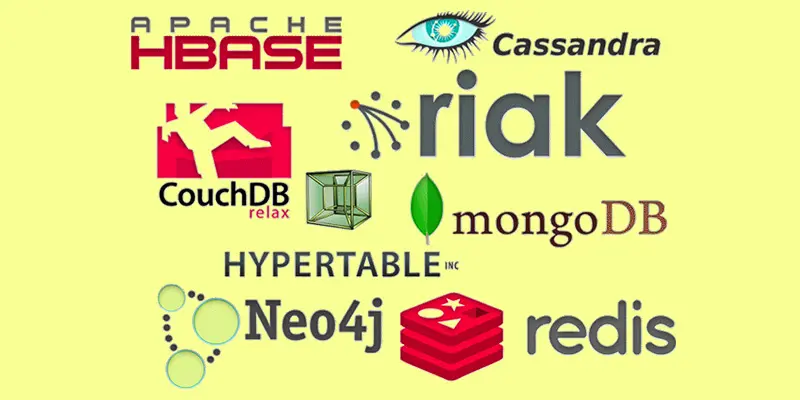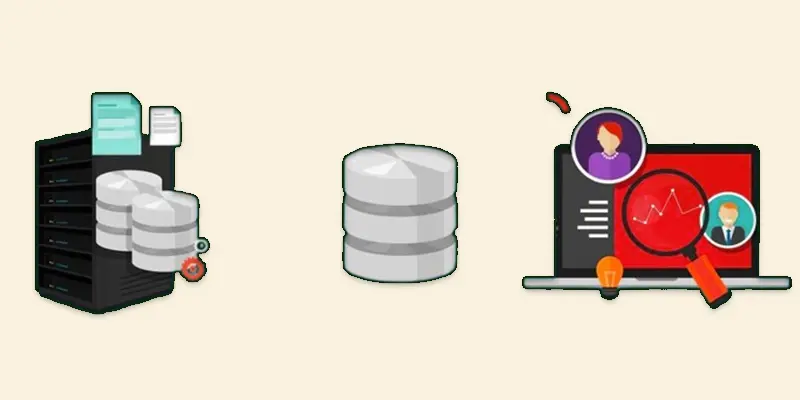How to Design a NoSQL Database | Simple Steps, Examples & Common Mistakes
Published: 22 May 2025
Design a Nosql Database
NoSQL databases power modern applications, handling massive data with speed and flexibility. But how do you design one properly? Many beginners struggle to choose the right NoSQL type, unsure whether key-value, document, or graph databases fit their needs. Without a proper design, scaling issues and data inconsistencies arise, leading to performance bottlenecks. Imagine building a database that grows effortlessly—let’s explore how to design a NoSQL database the right way!

NoSQL Database Types
NoSQL databases come in a variety of forms, each designed to satisfy certain data storage needs.
Key-Value Shops
- Store data as key-value pairs.
- Ideal for caching and quick lookups.
- Redis and Amazon DynamoDB are two examples.
Storage of Documents
- Keep data in adaptable documents that resemble JSON.
- Perfect for working with unstructured or semi-structured data.
- For instance, CouchDB and MongoDB
Family Stores in Columns
- For large-scale analytics, it is more efficient to store data in columns rather than rows.
- ideal for managing substantial amounts of structured data.
- For instance: HBase and Apache Cassandra
Databases with graphs
- They are ideal for complex connections because they store data as nodes and relationships.
- Ideal for fraud detection, recommendation engines, and social networks.
- Example: Neo4j, Amazon Neptune
Examples: MongoDB Document Store
- User Profiles – Store name, email, address, and order history in one document.
- E-commerce Products – Keep product details, images, and reviews together.
- Blog Posts – Save title, content, author, tags, and comments in a single document.
- Real-time Analytics – Track user activity, logs, and events without a fixed structure.
- IoT Data Storage – Store sensor data from smart devices in flexible documents.
- Chat Applications – Keep messages, sender details, and timestamps in one document.
Steps to Design a NoSQL Database
Designing a NoSQL database requires careful planning to ensure it meets performance, scalability, and flexibility needs. Follow these key steps to build an efficient NoSQL database.
Define Your Requirements
Before designing a NoSQL database, identify what kind of data you will store. Consider factors like data volume, read and write frequency, and scalability. Understanding these needs helps in choosing the right NoSQL model.
Choose the Right NoSQL Database Type
Select a NoSQL database type that best fits your application. Use key-value stores for simple lookups, document stores for flexible structured data, column-family stores for analytical workloads, and graph databases for relationship-heavy data.
Design the Data Model
NoSQL databases do not follow strict schemas like SQL. Instead, they allow flexible data structures. Organize data in a way that reduces joins and optimizes performance. For example, in an e-commerce system, store user profiles and order history in a single document rather than multiple tables.
Optimize for Performance
Indexing speeds up queries by making specific fields searchable. Sharding distributes data across multiple servers to handle high traffic. Replication ensures that data copies exist for backup and high availability. These techniques help keep NoSQL databases fast and reliable.

Implement Data Consistency Strategies
NoSQL databases often prioritize speed over strict consistency. Choose strong consistency if accuracy is critical, like in banking systems. Use eventual consistency for applications that can handle slight delays, like social media updates.
Secure and Monitor the Database
When designing a database, security is essential. To stop unwanted access, use role-based access control. Regular backups help prevent data loss. Monitoring tools like Prometheus or ELK Stack can track database performance and detect issues early.
NoSQL Database Design Principles
Design for Queries, Not Just Storage
- Structure your data based on how you will query it.
- Avoid unnecessary joins by keeping related data together.
Choose the Right NoSQL Model
- Key-Value Store – Fast lookups, best for caching.
- Document Store – Flexible, great for semi-structured data.
- Column-Family Store – Scales well, best for analytics.
- Graph Database – Ideal for relationships and networks.
Schema Flexibility with Standardization
- NoSQL allows flexible schemas, but maintaining some structure ensures better performance.
- Use consistent field names and data formats across documents.
Optimize for Read and Write Efficiency
- Use indexes for faster reads but avoid excessive indexing to prevent slow writes.
- Store frequently accessed data together to minimize queries.
Use Sharding and Replication for Scalability
- Sharding distributes data across multiple servers to handle large-scale applications.
- Replication creates copies of data for high availability and reliability.
Balance Consistency, Availability, and Partitioning (CAP Theorem)
- Strong Consistency – Ensures accurate data but may slow performance.
- Eventual Consistency – Faster but may show outdated data for a short time.
- Choose based on your application’s needs.
Secure Your Data
- Implement authentication and access control to prevent unauthorized access.
- Encrypt sensitive data and enable backups to protect against failures.
Monitor and Optimize Performance
- Regularly track slow queries and optimize indexes.
- Use performance monitoring tools like Prometheus or ELK Stack.
Common Mistakes to Avoid in NoSQL Database Design
- Choosing the wrong NoSQL type – Pick the right database model (key-value, document, column, graph) for your needs.
- Ignoring query patterns – Design data structures based on how you will query the data.
- Not using indexes properly – Too many indexes slow writes; too few slow reads.
- Poor schema design – NoSQL is flexible, but keeping a consistent structure helps performance.
- Skipping data replication – Without replication, data loss can occur during failures.
- Ignoring security – Always use authentication and access control to protect data.
- Not planning for scalability – Use sharding and partitioning to handle large data loads.
- Forgetting backups – Regular backups prevent data loss in case of failures.
- Overloading a single node – Distribute data properly to avoid performance issues.
- Ignoring monitoring and maintenance – Track database performance and optimize when needed.

Conclusion About NoSQL Database Design
Designing a NoSQL database has been well discussed. NoSQL databases are perfect for contemporary applications because of their high performance, scalability, and flexibility. I recommend carefully choosing the right NoSQL model based on your project’s needs and optimizing queries for efficiency. Always focus on security, indexing, and scalability to ensure smooth performance. If you found this guide helpful, explore more of our content and start designing your NoSQL database today!
FAQS How to Design NoSQL Database
NoSQL databases don’t need a set structure because they are schema-less. They are perfect for managing big datasets because they allow for horizontal scaling. They can manage a range of data kinds and offer high availability as well.
The cheapest NoSQL databases include MongoDB (free tier), CouchDB, and Apache Cassandra. Many cloud providers offer free plans or low-cost options for startups and small projects. The best choice depends on your storage needs and workload.
NoSQL databases store data in key-value, document, column-family, or graph formats. Instead of using tables and rows like SQL, they store flexible data structures such as JSON, XML, or key-value pairs. They allow fast read/write operations and scale easily for large applications.
Start by understanding your application’s data access patterns. Depending on your requirements, select the appropriate NoSQL type (document, key-value, column, or graph).Structure your data to minimize complex queries and optimize for performance.
NoSQL design follows patterns like one-to-many embedding (nested documents), aggregation, and partitioning. These patterns help in faster retrieval, efficient storage, and scalability. Choosing the right design pattern depends on your application’s data flow.
Key-Value Stores (e.g., Redis) – Fast and simple storage for caching.
Document Stores (e.g., MongoDB) – Flexible JSON-based data storage.
Column-Family Stores (e.g., Apache Cassandra) – Optimized for large-scale analytics.
Graph Databases (e.g., Neo4j) – Best for handling complex relationships.
OpenAI hasn’t publicly disclosed the exact database used for ChatGPT. However, AI models like ChatGPT typically rely on distributed databases, NoSQL systems, and vector databases to store and process large-scale training data.
NoSQL databases use different formats like JSON, BSON, XML, key-value pairs, wide columns, or graph structures. These formats allow flexible and scalable data storage. Unlike SQL, NoSQL formats don’t require a strict schema.

- Be Respectful
- Stay Relevant
- Stay Positive
- True Feedback
- Encourage Discussion
- Avoid Spamming
- No Fake News
- Don't Copy-Paste
- No Personal Attacks

- Be Respectful
- Stay Relevant
- Stay Positive
- True Feedback
- Encourage Discussion
- Avoid Spamming
- No Fake News
- Don't Copy-Paste
- No Personal Attacks





